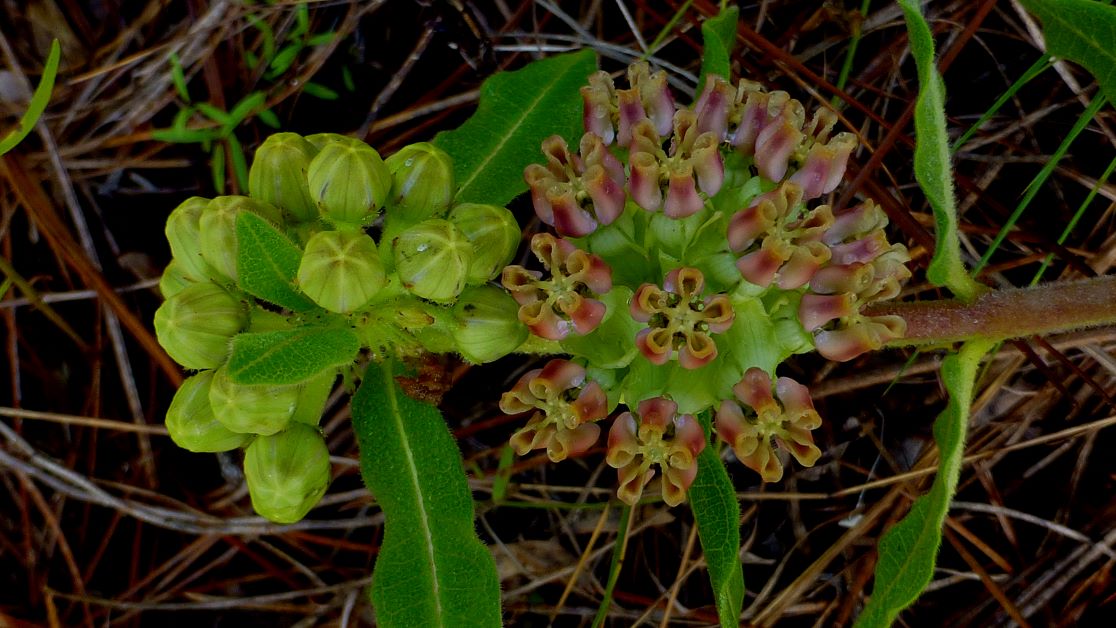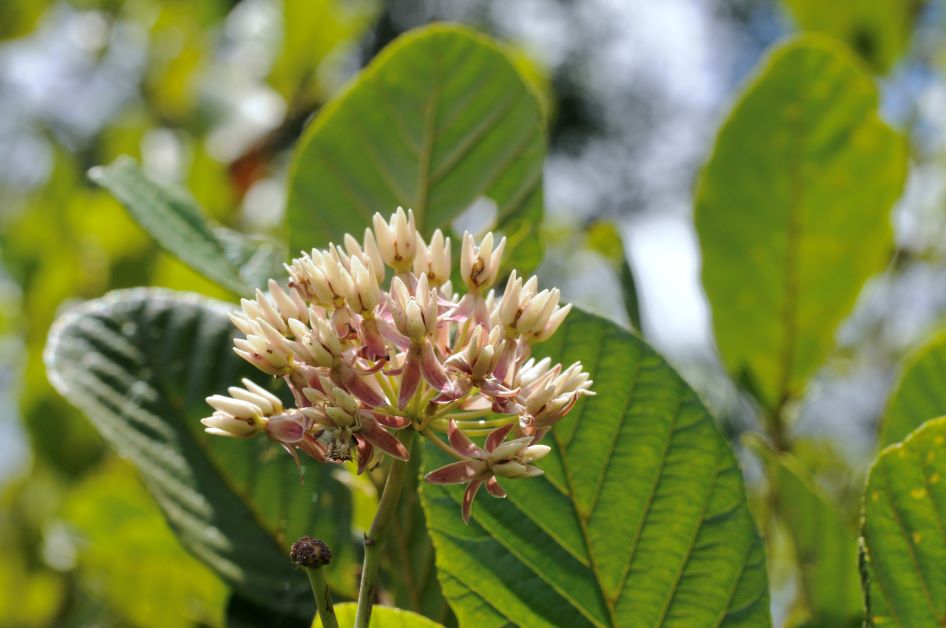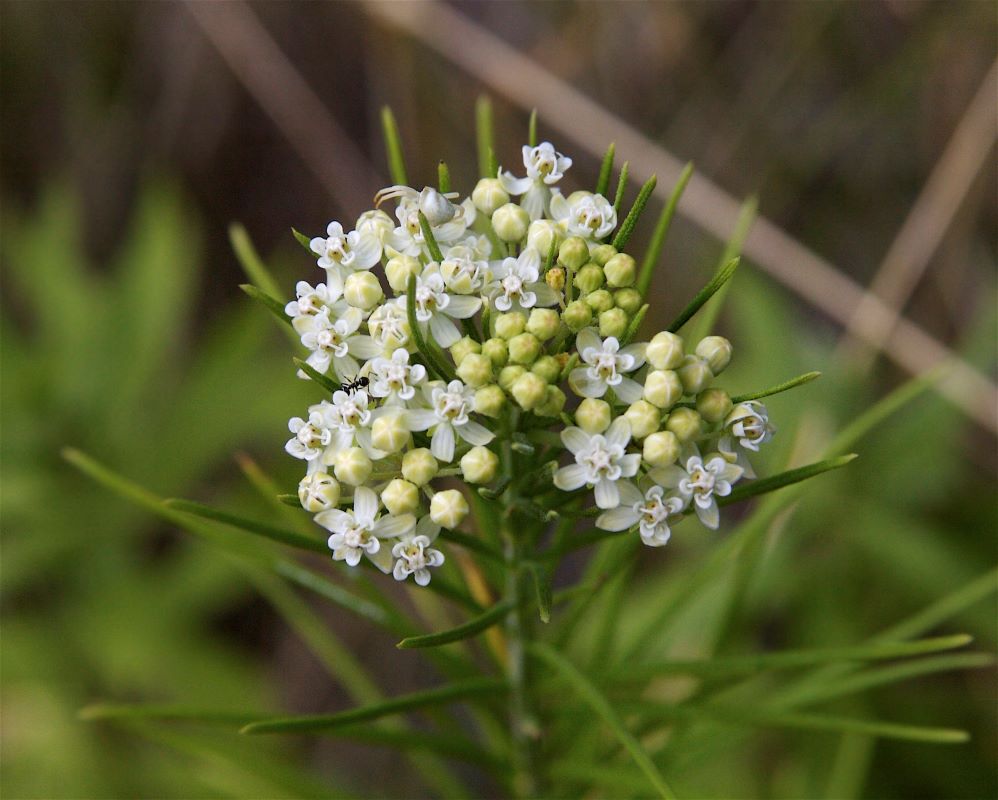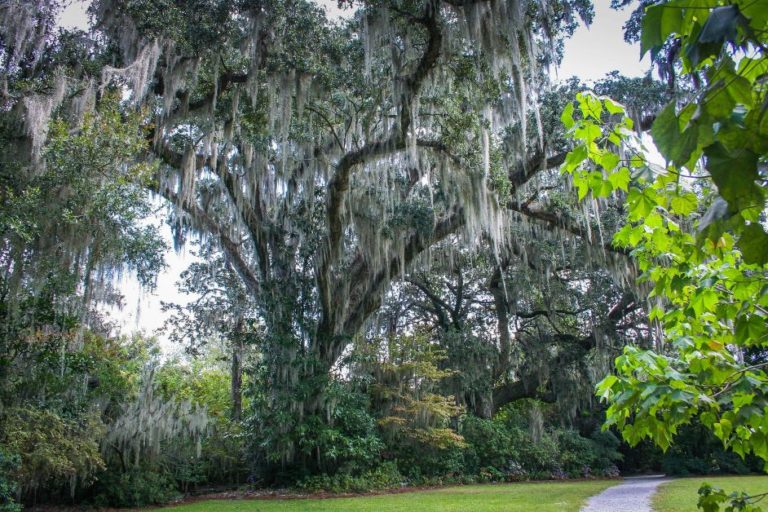Florida Native Milkweed
You may have heard some news in the gardening community about tropical milkweed and a monarch butterfly parasite called Ophryocystis elektroscirrha (or OE). If you haven’t, here’s the skinny:
Scientists around the world are asking gardeners in Florida to replace their non-native tropical milkweed (Asclepias curassavica) with Florida native milkweed, instead. This is to slow the spread of OE infection.
OE is a spore-like parasite that lives on tropical milkweed. Over time, OE builds up on the leaves of the tropical milkweed, reaching especially high levels when the plant doesn’t die back in winter (like it doesn’t in most of the state). Florida native milkweed, on the other hand, does have a natural bloom and death cycle and this helps keep OE levels down. When a monarch eats milkweed infected with OE, it too becomes infected and can spread this infection to other healthy monarchs.

An OE infected monarch may not have enough strength to emerge from its cocoon or it could turn out deformed. If an infected monarch does successfully finish its metamorphosis, it may die on its annual migration to Mexico.
Another problem with tropical milkweed grown in Florida is that it provides a year-round food source for monarchs. Although this doesn’t sound like a problem, perpetually blooming milkweed can cause a monarch to stay put in winter instead of migrating as nature intended.
Some people still grow tropical milkweed in Florida but cut it back from October through February. If you don’t want to deal with the hassle, you can safely feed your local monarchs by planting native milkweed instead.
Is Milkweed Native to Florida?
Out of the 140 species of milkweed in the world, roughly 20 are native to Florida. Most of these native milkweeds aren’t available commercially but there are 3 more popular species of Florida native milkweed you can sometimes find in specialty nurseries: butterfly milkweed (Asclepias tuberosa), and 2 types of swamp milkweed (Asclepias incarnata, Ascelpias perennis).
Florida Native Milkweed List
Use this Florida native milkweed list to identify plants in the wild:
Clasping Milkweed (Asclepias amplexicaulis)

Carolina Milkweed (Asclepias cinerea)

Largeflower Milkweed (Asclepias connivens)

Curtiss’ Milkweed (Asclepias curtissii)

Florida Milkweed (Asclepias feayi)

Pinewoods Milkweed (Ascelpias humistrata)

Swamp Milkweed (Asclepias incarnata)

Fewflower Milkweed (Asclepias lanceolata)

Michaux’s Milkweed (Asclepias michauxii)

Pineland Milkweed (Asclepias obovata)

Savannah Milkweed (Asclepias pedicellata)

Swamp Milkweed (Asclepias perennis)

Red Milkweed (Asclepias rubra)

Velvetleaf Milkweed (Asclepias tomentosa)

Butterfly Milkweed (Asclepias tuberosa)

Redring Milkweed (Asclepias variegata)

Whorled Milkweed (Asclepias verticillata)

Green Milkweed (Asclepias viridiflora)

Green Antelopehorn Milkweed (Asclepias viridis)

Southern Milkweed (Asclepias viridula)

Where to Buy Florida Native Milkweed?
The easiest way to find Florida native milkweed for sale is to contact a nursery that is a member of the Florida Association of Native Nurseries, or FANN. FANN is a group of retailers, environmental consultants, landscapers, and other experts that are dedicated to the cause of restoring Florida’s habitat.
It’s possible to find the more common butterfly milkweed for sale online, but when you can, source your native plants locally. This way, you can rest assured that your plant really is a native and isn’t a counterfeit (which sometimes happens!).
Use the FANN database to search for the Florida native nursery that’s closest to you.
What Other Plants and Trees are Native to Florida?
I’m passionate about growing Florida natives and think it’s important that we all do our part in keeping our beautiful state healthy. For more information on Florida native plants, check out:
- Top 10 Florida Native Fruit
- The 12 Native Palm Trees of Florida
- Florida Oak Trees
- How to Grow Seagrapes in Florida
- How to Grow Passionflower Vine
- How to Grow Everglades Tomatoes
- Seminole Pumpkin Growing Guide
- How to Grow a Mulberry Tree
- Wild Coffee – Florida’s Little Psycho
- The American Beautyberry – A Florida Native
- How to Grow Ground Cherries in Florida
Featured Image Photo Credit: David Seidensticker






